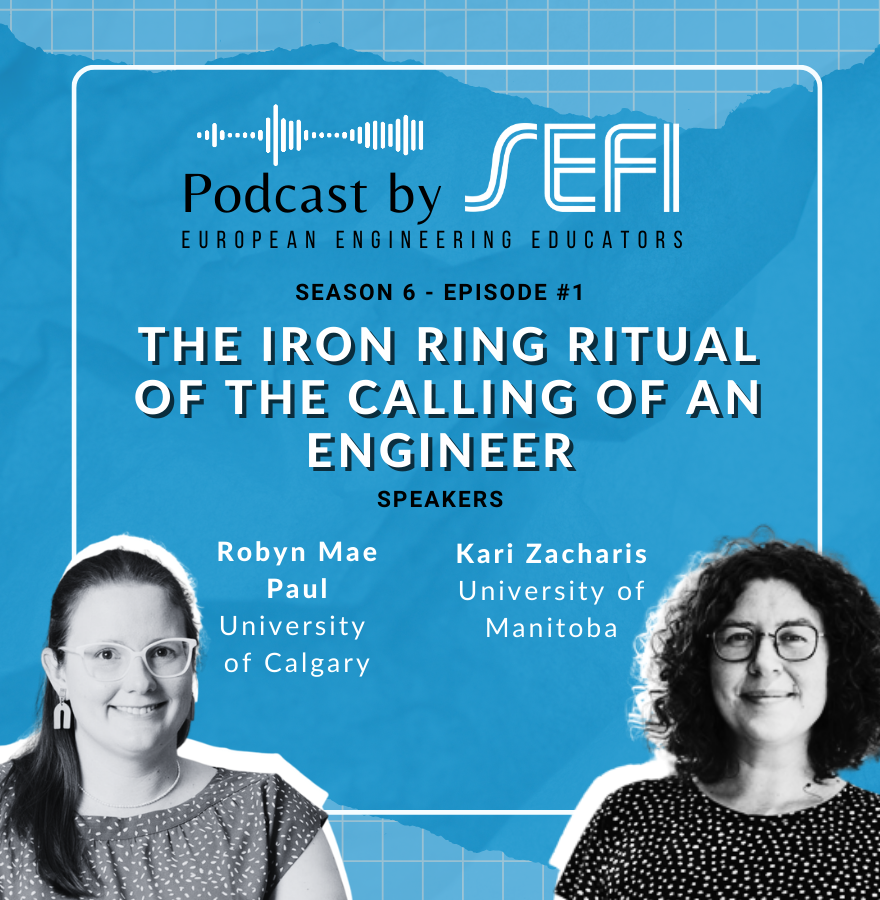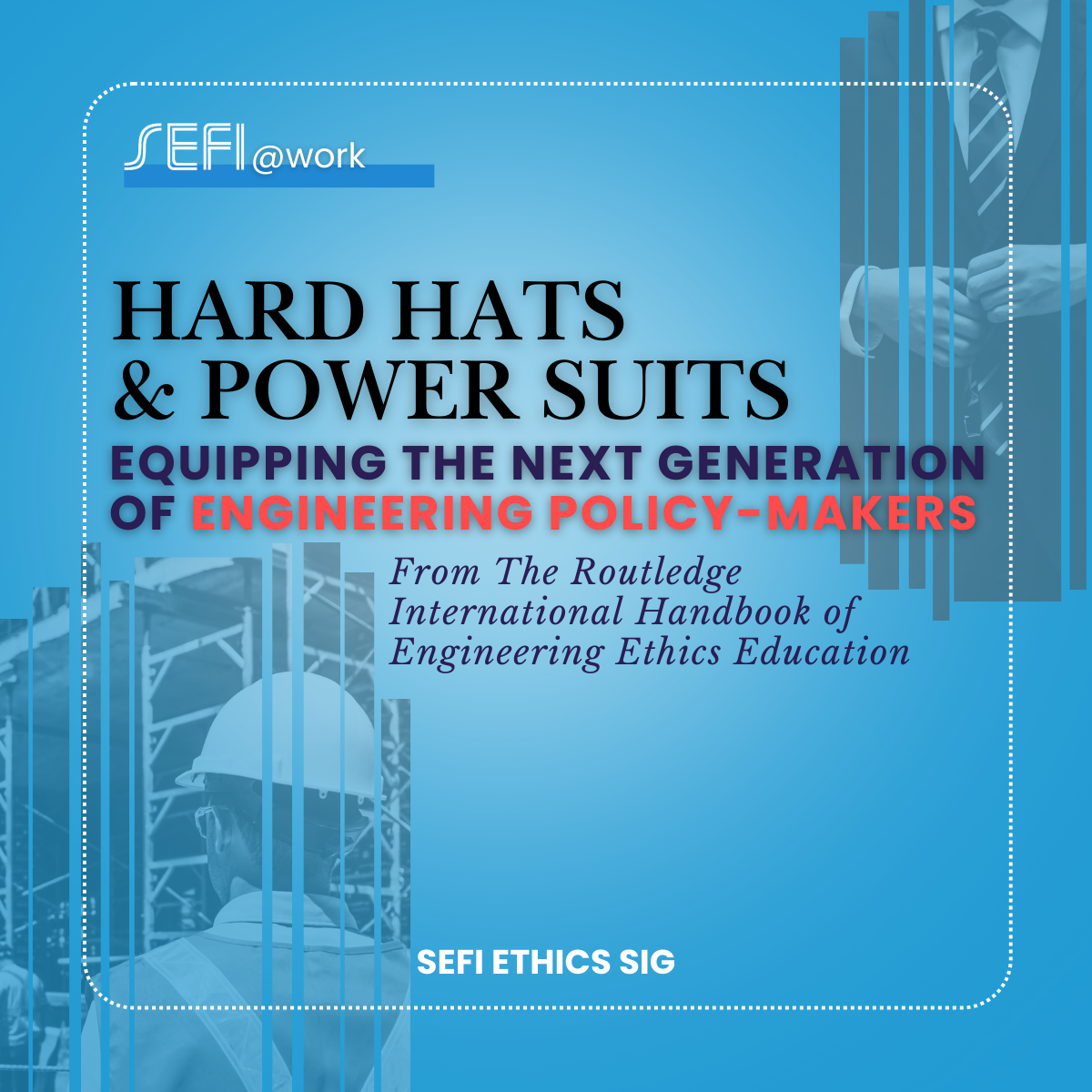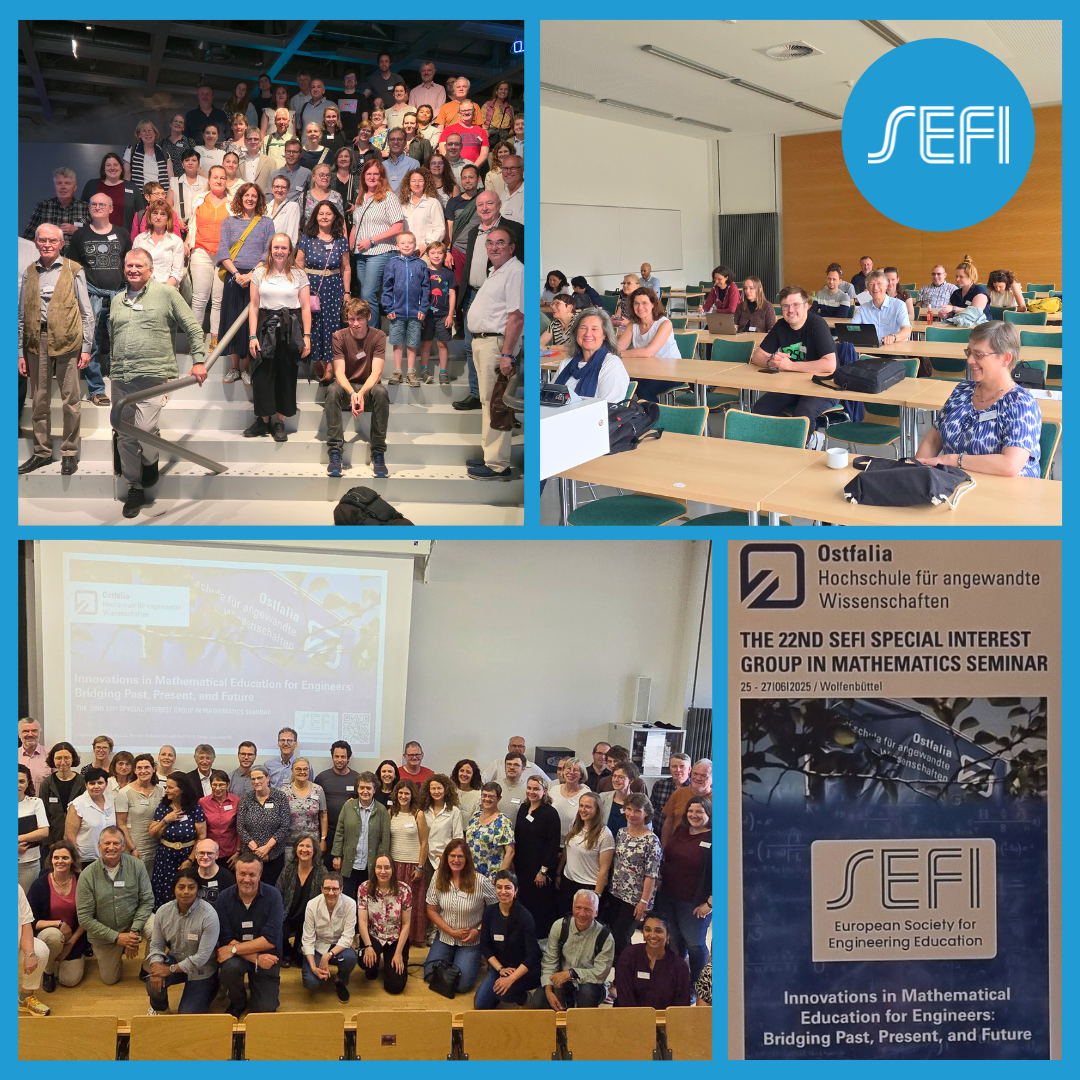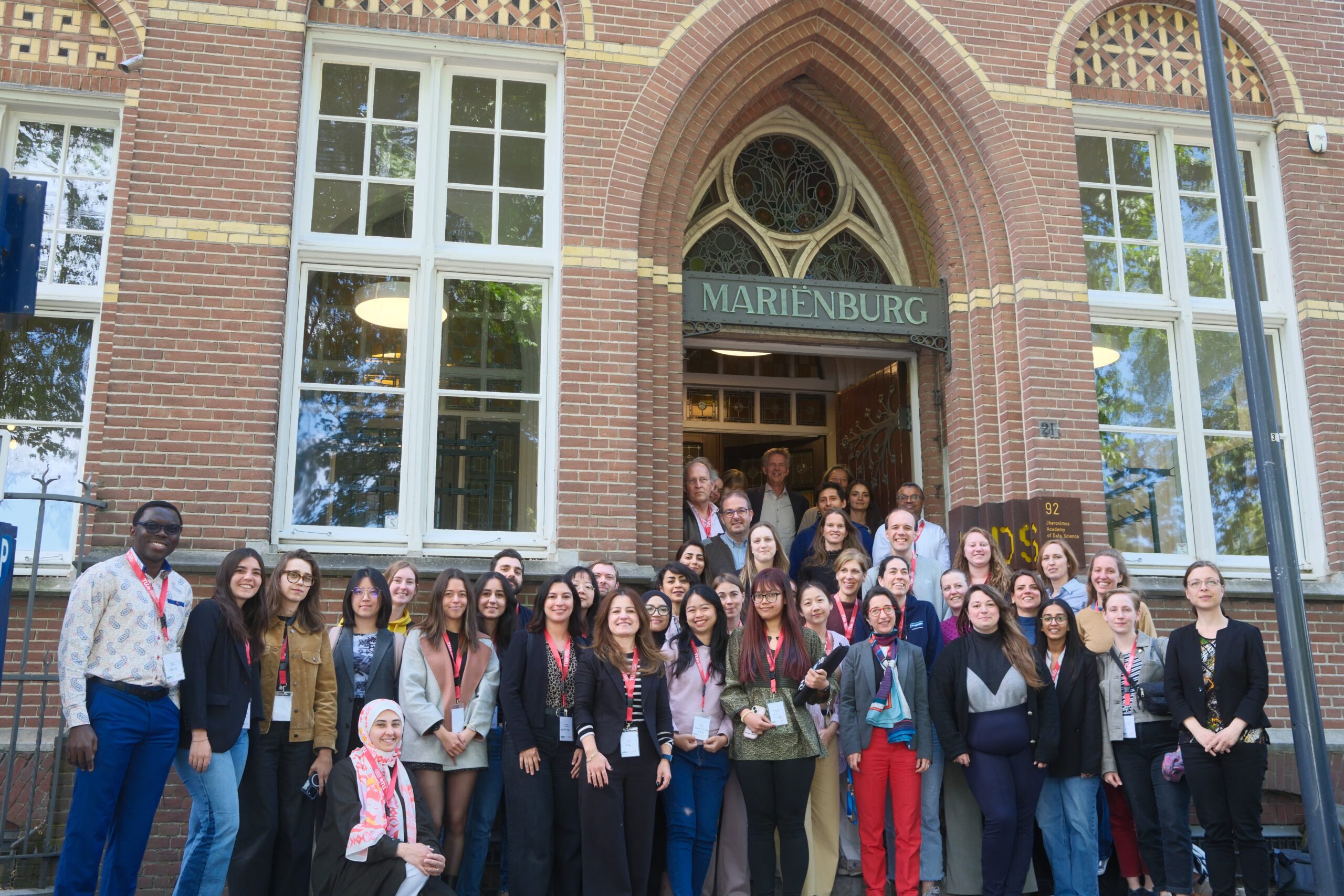By Tom Børsen, Associate Professor, Aalborg University How can we prepare engineering students not only…
The Archimedean Oath, first developed in 1990 and inspired by the Hippocratic Oath, was promoted as a reflection tool during SEFI 2024. Historically, the oath was read and signed at the end of master’s level study and allowed engineers to emphasise their commitment to their institution and global responsibility. Taking an oath was viewed as supporting graduates in making ethical decisions within professional practice. However, societal and environmental needs have since changed, this triggering moves to update both the form and scope of the oath.
Similarly, in Canada, the Iron Ring or Ritual of the Calling of an Engineer is a ceremony which engineering graduates traditionally take part in. In this episode we spoke to Robyn Mae Paul from the University of Calgary and Kari Zacharias from the University of Manitoba who are part of the group ‘Retool the Ring’, whose work focuses on advocating for changes to the ceremony.
The History of the Ritual
Kari explains that the ceremony dates to the 1920s and was written by Rudyard Kipling at the request of a group of Canadian Engineering Professors. At this point in time engineers were trying to advance the public status of the profession and to unify individuals to form a community. They explain that a ring, originally made of iron, is given to participants during the ceremony and is worn on the fifth digit of their dominant hand. Robyn explains that the ceremony is very secretive with many of the details being unknown and unclear.
Our guests explain that the ceremony is organised and facilitated by the Corporation of the Seven Wardens, which oversees 28 ‘camps’ throughout the country. Volunteer wardens at each camp then arrange and conduct the ceremonies for graduating engineering students and other candidates who meet the requirements for professional engineering licensure in Canada.
They then explain that the ceremonies vary between camps, for example, some camps permit only engineers who have previously participated in the ritual to attend, while others allow participants’ family and friends to observe. The ritual varies between camps. Whilst camps can create and include their own preamble and conclusion, and invite guest speakers, the official text of the ritual is the same at all camps and remains (virtually) unchanged from Kipling’s writing. Ceremonies are typically solemn and ritualistic, involving various metal artefacts, and collective recital of the obligation after which participants receive their ring.
Deeply embedded in culture
Robyn explains that, although participation in the ceremony is optional and not required or attached to regulatory bodies or universities, most students do choose to go through it.
Kari describes how the ceremony marks a time of celebration at the end of study and, for some, helps them feel welcomed into the professional community. They explain that, in some cases, participants are given their ring by a family member or other engineers in their life, something which can add meaning to the experience.
The Start of Retool the Ring
Robyn explains that the group first came about as a result of a roundtable discussion entitled ‘We need to talk about Rudyard Kipling: On the origins of the Ritual Calling of the Engineer in an age of reconciliation’ at the Canadian Engineering Education Conference in 2022. This event brought together people with similar views as to the need to change the iron ring ceremony, which was framed as a colonial ceremony. Perceived issues included the association with Rudyard Kipling and his extremist views, inability to understand the language and meaning of the obligation, limitations of the individualistic nature of the oath, lack of transparency around the ceremony and operation of the camps, inclusion of offensive remarks, and lack of ability to raise complaints. Kari explains that there have been some changes since this time, with Camp 5 publishing names of wardens and opening communication channels.
Retool the Ring Group Activities
Kari explains that the group started as an advocacy group but have been involved in several activities. For example, they co-authored a statement listing the reasons that they believed the ceremony should be updated, this being published and circulated with many signatories including Engineers Canada. They have also met with the Corporation of the Seven Wardens. Scholarly activity includes discourse analysis of publications and conversations on the ritual including the call to action and responses to them, as well as the obligation text itself.
Boundary work
The work made use of the framework ‘boundary work’, which, in this context, focuses on the way in which these different discursive engagements with the iron ring have established, maintained or challenged boundaries that exist, for example in terms of what engineering work is and what it is not, this relating to the original idea of the ceremony which was to differentiate and raise the status of the engineering profession. They explain that the boundaries identified in their work included those around who engineers are and who can be an engineer, as well as the scope of engineering work and responsibility.
Robyn explains that the ceremony is core to engineering identity for many within Canada and thus the boundaries which come out of the ritual have cultural significance and long-standing impact.
Kari tells us that a well-known engineering disaster, the collapse of the Quebec Bridge, occurred just before the iron ring ritual was created, this having a profound impact on the way people thought about engineering, often being cited as the motivation for the founding of the ceremony. The wardens thus tend to frame the ceremony in terms of engineering disasters and successes. Kari claims that in this case the boundary is encouraging people to think about engineering ethics in terms of avoiding technical disasters to the exclusion of other, everyday ethical issues such as using biased training data when designing an algorithm.
Robyn goes on to tell us that, as with the language of the oath, technical language used by engineers can also be hard to understand thus resulting in a lack of transparency and clarity and creating a boundary. Kari tells us that the ritual also acts to exclude individuals from the profession, particularly indigenous engineering students and engineers or non-Christian individuals.
Views on change
Robyn explains that strong boundaries resist change and that although there is a general consensus that things shouldn’t be exclusionary, there is also a feeling that there is a need to maintain tradition. Kari describes the personal connection to, and emotional investment in, the tradition, with wardens, for example, seeing themselves as keepers of tradition.
Robyn explains that although one of the main issues with the iron ring is around its colonial connection, one of the biggest priorities is transparency as without transparency, issues with remain and we will struggle to change and adapt.
Robyn and Kari both stress the value they see in the ceremony and praise the efforts that different individuals such as the wardens have made towards creating change.
What is next?
Robyn explains how they think of the work in terms of both advocacy and scholarship. The group have multiple publications in progress and are awaiting changes to the ceremony in 2025 to plan how to further engage in the conversation.
Further reading
The following links will take you to publications authored by members of the Retool the Ring group.
https://www.frontiersin.org/journals/education/articles/10.3389/feduc.2023.1177035/full
https://ojs.library.queensu.ca/index.php/PCEEA/article/view/17100



